Behaviour
Caring for babies
Bottle feeding
Changing a nappy
Cleaning and sterilising bottles
Daily cleaning tasks
Helping new children settle in
Preparing for a nappy change
Sleep patterns – babies
Sleep routines – babies
Toilet training
Caring for children
Allowing time for practice
Dressing/undressing
Mealtimes
Nappy change
Packing away/caring for the environment
Sleep/rest time
Toileting
Common self-help milestones
Tips for sleep and rest time
Self image
Communication
Body language
Limits and guidelines
Ways children communicate
Greeting children and families
Modelling appropriate communication
Questioning
Verbal and non–verbal communication
Acknowledging children's feelings
Listening attentively
Communicating with Aboriginal and Torres Strait Islander parents/carers
Development
Allowing time for practice
Dressing/undressing
Mealtimes
Nappy change
Packing away/caring for the environment
Sleep/rest time
Toileting
Common self-help milestones
Creative development
Language development
Modelling positive relationships
Physical development
Sharing and taking turns
Sleep patterns – babies
Sleep routines – babies
Encourage independent problem solving
Fundamental movement skills
Health, hygiene and safety
Coping with stress
Correct manual handling principles
Daily cleaning tasks
Hand washing
Hand washing poster
Manual handling overview
Toilet training
Safety checklist
Learning experiences and play
Environmentally friendly learning experiences
Learning experiences for different development areas
Creative resource materials
Arranging the environment to facilitate learning and pleasure
Indoors and outdoor areas
Creating a positive physical environment
Legal and ethical issues
Child abuse case studies
How do I recognise when a child or young person is at risk?
Tips on dealing with disclosures
Observation methods
Arranging Experiences (PDF 351Kb)
Recording observations
Rules for making observations
What you can learn from observations
Programming
Children’s interests, strengths, needs and skills
Extending the children’s interest in dinosaurs
Objective observation
Planning an OSHC environment
Behavior management plan
Planning enjoyable experiences
Planning experiences for 0 - 2 years age group
Planning experiences for 2 - 3 years age group
Planning experiences for 3 - 5 years age group
Daily cleaning tasks
At the end of each day, certain cleaning duties need to be completed.
Benches, tables, chairs and highchairs
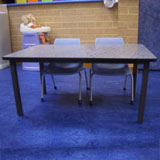
Cleaning benches, tables, chairs and highchairs will happen often during the day, especially after meal times and activity times.
However, at the end of the day it is a good idea to check that these items are clean ready for the morning. When you are cleaning benches, tables and highchairs, the surface area on top and underneath should be cleaned. Stack chairs rather than placing them on table tops when you clean the floor.
As well as regular cleaning, taking tables, chairs, benches and highchairs outside occasionally for a good scrub is a good idea. The children can help you with this job.
Toys
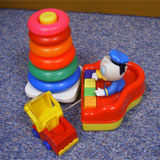
The washing of mouthed toys needs to be ongoing. When a toy has been mouthed and discarded, it needs to be washed in hot soapy water. At the end of each day, all toys need to be washed and then wiped wtih disinfectant or washed in the dishwasher. Washing the toys helps to reduce the risk of cross-infection.
Floors
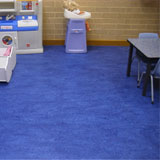
Sweeping the floor after each meal and specifically when there is something to be swept up and at the end of each day - eg, sand, paper, food scraps.
Mats
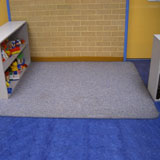
Mats, like the floors, should be vacuumed when necessary during the day when there has been a spill (eg sand), and then again at the end of the day.
Bins
Bins containing bodily excretions and bins containing food scraps must be covered at all times. All bins to be emptied at the end of each day and wiped clean when necessary.
Potties and toilets
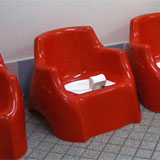
Potties need to be washed after each individual use. Toilets need cleaning in the middle and at the end of the day.
In addition, the change area should be cleaned after each nappy change.
Linen, blankets and sleeping mats
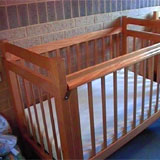
Each child is allocated their own set of bed linen, blankets and a sleeping mat. These are to be stored separately for each child.
Bed linen must be washed at least once a week or immediately if soiled. Sleep mats or cot mattresses need to be disinfected after each use.
Cloths

Different cloths should be used for each duty. For example, pink cloths might be used for cleaning tables, and green cloths for cleaning floors. This helps to stop the spread of germs and bacteria from one surface to another. Your child care service will have their own procedure to follow.